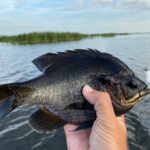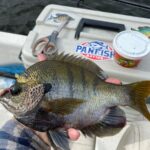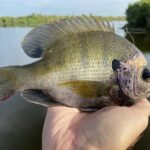The largemouth bass is the most popular gamefish in North America, and each year millions of anglers hit the lakes and rivers to catch their dream fish.
But where does it all begin? How does a 10-pound bass actually become a 10 lb bass?
In this article, I’m going to cover a list of frequently asked questions about largemouth bass eggs.
More specifically, the process of spawning, guarding the nest, growth timelines, and how all of this relates to fishing.
Whether you are a seasoned bass angler or you are interested in raising bass for your own pond…I promise there is something to learn in this article!
Table of Contents
What Age Do Bass Begin to Lay Eggs?
Female largemouth bass can begin laying eggs after just one year old.
Largemouth bass typically reach sexual maturity, within their first year of life.
Depending on different biological factors, bass can mature as early as three months while some others may take a full year to mature.
Why Do Bass Lay Eggs?
From a biological perspective, the point of life is to reproduce and pass on your genes! Like many other fish, bass lay eggs. The eggs are the target for external fertilization, and they contain all the necessary ingredients for embryonic bass to develop, hatch, grow into independent little bass.
Fish eggs are enclosed by an envelope which helps to protect the developing largemouth bass from its external environment.
Bass eggs are also sticky, which helps the eggs stick together and to the substrate (sticks, stumps, aquatic vegetation, etc), so that they remain safely in the nest.
Where Do Bass Lay Eggs?
Largemouth bass make nests, known as beds, to lay their eggs in. They construct their nests strategically in shallow protected areas where their eggs will have the highest chance at survival.

Largemouth bass nests are constructed in shallow areas, usually 2 to 6 ft in depth, with warm temperatures, and a firm substrate.
This can range from sandy bottom lakes in Florida, to rocky gravel and ledges of Michigan.
An ideal nesting site should also be protected from wind and waves which threaten to disorient the vulnerable bass fry.
Largemouth bass are highly adaptable, and can nest in a wide variety of habitats.
How Old Are Bass When They Spawn?
As mentioned earlier, largemouth bass are sexually mature and can begin spawning within 1 year. Some individuals may start in just three months, and others may take a full year to mature.
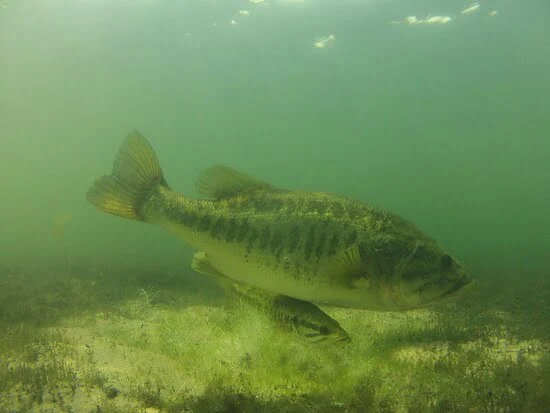
It is thought that bass will spawn every year, in the spring, throughout their life.
However, some individuals may take a break between years to recover from the stress associated with spawning.
This is often the case with male bass who devote the most amount of time and energy to raising their young.
Yep, that’s right…the male bass are the ones that guard and protect the nest!
How Do Bass Eggs Get Fertilized?
First, the female bass will lay its eggs in the nest. Eggs are released in short intervals and this process can last a few hours to a full day.
After the egg laying process, the male will release his sperm into the nest, and the eggs are fertilized externally.
It’s a much quicker process than most people think!
What Time of Year Do Bass Lay Eggs?
Bass lay eggs during the spring season, but this can vary a bit by region. In warmer subtropical regions, bass begin spawning in the late winter and can continue until the early summer. In northern regions, temperatures force bass to spawn within a much shorter window in the springtime.
Largemouth Bass spawning occurs in waves. This ensures that bass don’t spawn all at the same time.
The largest individuals will usually spawn first. These larger individuals have fed well and are the first bass prepared for the energetic costs required to spawn. The smaller individuals are last to mature and tend to spawn late in the season.
This early spawn behavior gives their offspring some survival advantages.
First, they can claim the best spawning areas. Second, this early spawn gives their offspring a headstart over bass which are born later.
This gives them access to more feeding opportunities; they will grow faster, and can even feed on the other bass which are smaller than them.
However, early spawn can be risky. If bass spawn too early, they are susceptible to sudden drops in temperatures.
Spring is often seen as the best time of year for bass anglers to catch a trophy. And some anglers specifically target large bass while they are on the bed.
This tactic is known as bed fishing and is somewhat controversial in the bass fishing community.
How Long Do Bass Eggs Take to Hatch?
Depending on water temperature, bass eggs will hatch between three to five days. After hatching, the baby bass are still connected to their yolk sac. They can’t swim yet, so they stay on the bottom of the nest.
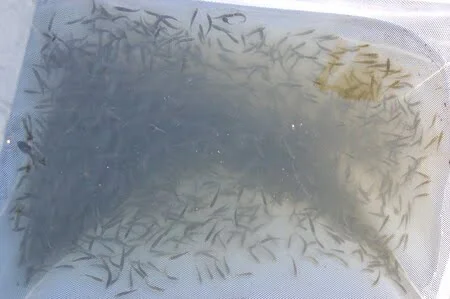
After about a week, the yolk sac will have been absorbed, their mouth parts will be fully formed, and their air bladder will inflate.
At this point, they are able to swim around and start feeding on zooplankton.
Do Bass Protect Their Eggs?
Bass do protect their eggs, just like other members of the sunfish family. This responsibility is taken fully by the male bass who will guard the nest until his offspring are fully free swimming.
It can take 7 to 10 days for the bass fry to reach this free swimming stage, and the male must spend lots of energy watching and protecting them. This process is extremely stressful on the male bass who has to be on alert at all times.
Even after they are free swimming, the male could stay with his young for up to a month. He may go for extended periods of time without eating.
Parental care is extremely important for the survival of bass young. Bass fry are vulnerable and there are a ton of predators who are looking for an easy meal.
Sunfish, other bass, and even crayfish pose a threat to young bass.
The male bass also oxygenates the eggs by moving his pectoral fins. This creates a current and increases oxygen flow in his nest.
Without this, the eggs would suffocate on the bottom of the nest.
How Many Bass Eggs Survive?
On average, 4000 eggs are laid by female bass, but in extreme cases, some bass lay up to 45,000 eggs.
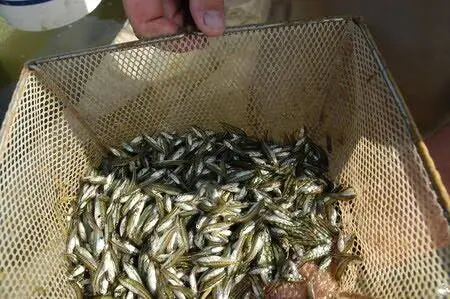
The survival rate of young bass depends on many different factors. Each habitat can be very different, and the survival rate can change according to things such as temperature, predator abundance, and parental care behavior.
For example, dramatic changes in temperature can cause a male to abandon his nest altogether.
On some lakes, survival rates are very high depending on external threats such as water conditions, weather, available forage base, and predators.
You May Also Like: Why Does My Pond Only Have Small Bass? Here’s Why!
What Do Bass Eggs Look Like?
Bass eggs are very small, usually 1 to 2 mm in diameter, round whitish clear spheres. They sit at the bottom of the nest and adhere to each other and the nest substrate.
Before eggs are laid, they are grown inside the female’s egg sac, which contains all the eggs.
If you’ve ever cut open a female bass, you may have seen this yellowish color egg sac with the very tiny eggs inside.
How Can You Tell if a Bass you Catch Has Eggs?
In the springtime, egg-carrying females can easily be identified by their swollen bellies.
Other evidence from spawning can usually be seen on bodies of male and female bass.

Male bass will usually have reddish tails from digging the bed. Females often have injuries on their head and bellies from being pushed around by the male to the bed.
What Kind of Fish Eat Bass Eggs?
Many species of fish eat bass eggs and bass fry. Species of sunfish, like bluegill, green sunfish, and pumpkin seed will go after bass eggs. They will challenge male bass and try to sneak into his nest to eat the eggs.
Other fish species like minnows and shiners and darters will readily feed on bass eggs given the chance.
Baby bass are still vulnerable to nonfish predators. Crayfish, shrimp, and predatory insect larvae will eat bass eggs and fry.
Even after the bass fry are free swimming, they are still not clear from predation.
Sunfish, pike, and even other bass will chase baby bass.
In fact, cannibalism occurs frequently in bass! That’s why “baby bass” is one of my favorite colors for Zoom Flukes!
What Do Female Bass Do After They Lay Eggs?
Most female bass will rest near structure after spawning. The females will slowly recover and start feeding up again for the summer.
However, many big females, especially in the southern states, will prepare to spawn again! Quite often the biggest bass will spawn early in the season and again at the very end.
In the post spawn, largemouth bass feed slowly until they gain strength. Slow moving baits around vertical structure work well for post spawn bass.
As the temperature increases towards summer, their metabolism speeds up, and they feed aggressively, especially on spawning bluegill.
Can You Eat Bass Eggs?
Bass eggs are edible! If you ever harvest a gravid female largemouth, you will see the egg sac inside its belly. This is usually a yellowish color with little round balls inside, these are the individual eggs.
Preparing Fish egg sacs is easy. They are good pan-fried in butter or oil and lightly salted. Keep it simple!
Eating Largemouth Bass can be a controversial subject, always be sure to follow fishing regulations in your area.
If you haven’t guessed yet, I love fishing and everything about it!
To learn more about why I started Panfish Nation, visit the About page and follow along on Social Media:


Download a copy of my FREE Lure Color Selection Chart & Knot Guide!
Stay up to date with fishing reports, tackle reviews, industry news, and much more! We respect your privacy, unsubscribe at any time.
Related Posts
- Crazy Facts About the World Record Crappie
- What Size Hooks for Smallmouth Bass? Quick Guide
- Large and in Charge-Mouth: 10 of the Best Bass Lures of All Time (And Where to Buy Them)
- Emperor of the Sun(fish): What You Need to Know About the World Record Bluegill
- Coppernose Bluegills: How They’re Different from Common Bluegill
- Bluegill vs Brim: Differences & Terminology, Explained!




